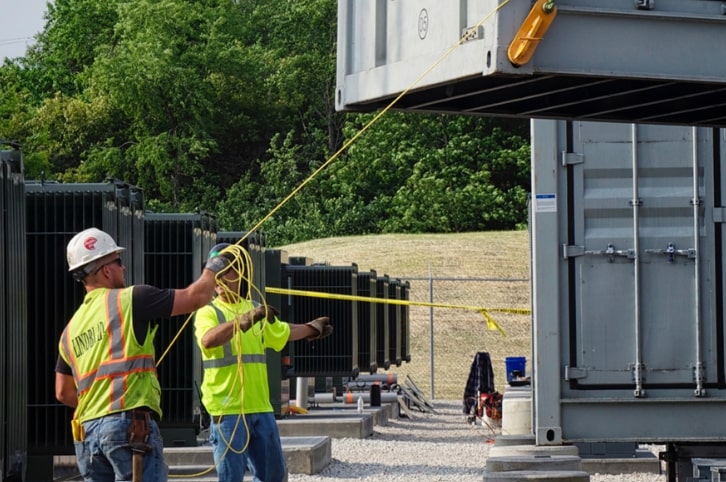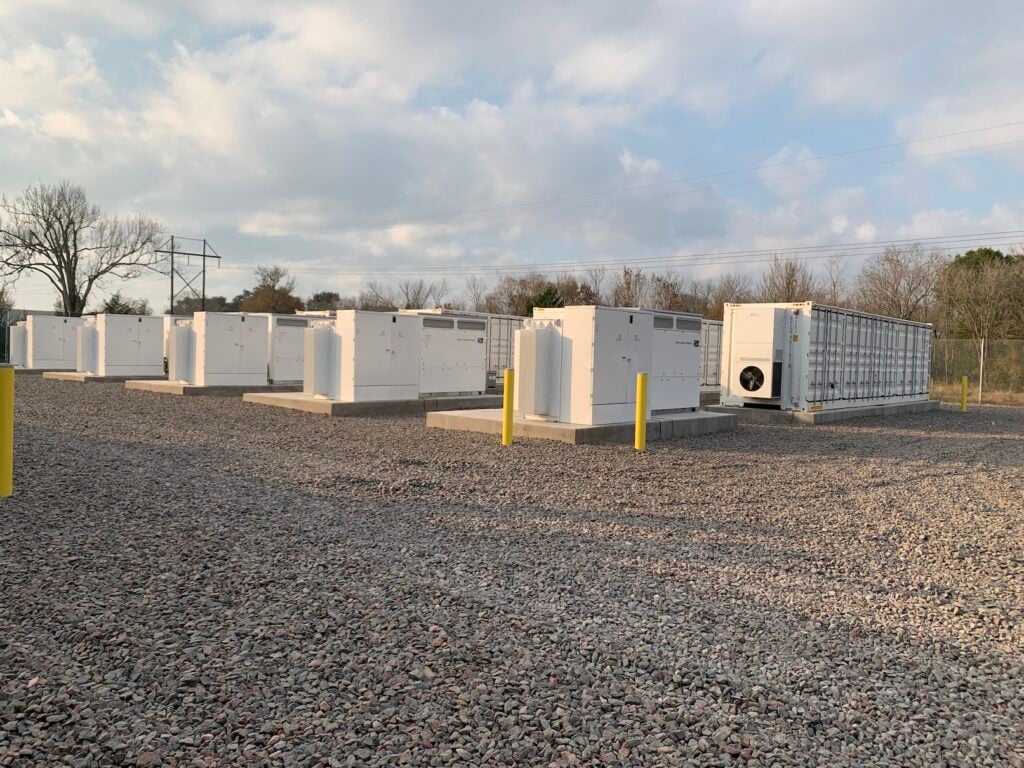
Chris McKissack, CEO of GlidePath, talks to Energy-Storage.news about ERCOT’s evolution, optimisation strategies and how batteries and renewables can take on fossil fuels.
US battery storage developer and owner-operator GlidePath has been active since 2015, when it began with projects in the first-mover PJM Interconnection market. In 2019, it deployed its first grid-scale assets in Texas’ ERCOT territory, which by all accounts is pulling level with California’s CAISO as a leader in the sector.
Enjoy 12 months of exclusive analysis
- Regular insight and analysis of the industry’s biggest developments
- In-depth interviews with the industry’s leading figures
- Annual digital subscription to the PV Tech Power journal
- Discounts on Solar Media’s portfolio of events, in-person and virtual
We spoke to Chris McKissack, GlidePath CEO, at the national RE+ 2023 clean energy trade event earlier this month. While the company is active in New York and pursuing opportunities elsewhere in the States, we started our discussion with ERCOT business models, optimisation strategies and how batteries and renewables can take on fossil fuels.
Energy-Storage.news: It seems that many are looking to Texas’ ERCOT market, which covers more than 80% of one of the US’ biggest states, as a real-life case study of the role battery energy storage system (BESS) assets can play on the grid. There’s a monetary value associated and a societal value too, isn’t there?
Chris McKissack: Absolutely. The two can’t be untangled. What’s happening in Texas is that you’ve had unprecedented load growth over the course of time, unprecedented build-up of renewables, you’ve had retirements [of thermal power plants] and then on top of that, you have this extraordinary heat event that sustained for the entirety of the summer.
It’s really stressed the system to the max, to the point where it was at the brink of failures that would have caused cascading blackouts. What I’ve been saying for years is that the grid needs flexibility, and it’s the piece that was missing.
You’ve got over 3,000MW of storage that’s online right now and you see that flexibility come into play, to keep the lights on, to give the operators the chance to respond to real time events in a very dynamic physical market with both economic signals, and also with structural tools that they’ve been designing.
ERCOT Contingency Reserve Service is perhaps the first product change ERCOT has come out with in about 17 years, and they’re already looking at additional new products.
Whatever the market construct is, every market designer, every Regional Transmission Organisation (RTO) or Independent System Operator (ISO) [across the US] is figuring out that they need stability, and then baseload, ramping from additional resources, they need energy from clean sources. Then they need flexibility as well, and that’s the tool that storage can be for.
It’s interesting that Texas has become such a big market for energy storage because it’s not as if the grid operator or policymakers have said: “ERCOT needs X amount of storage.” There’s no deployment target for energy storage, yet the approach in place seems to have worked?
It has kind of worked, but some of it’s not working the way the designers intended it to. I think the designers intended to have a really high market cap and no capacity price.
The intent was for there to be a lot of gas and thermal generation come online, because that was a way to justify their capital expenses, in building out these large facilities where you didn’t have any long-term capability of contracting or guaranteeing that revenue. So they had to capture those [price] spikes.
It just so happens that developers, builders, owners [and] operators like us are able to figure out those price signals as well and say: “Well, what else could be responsive to the price signal? Is that a price signal that fully actually justifies a 1,200MW combined cycle gas turbine plant, or is it several smaller energy storage projects?”
Then you look at how you maximise revenue for each of those opportunities, how do you manage your risk as an investor in operating these facilities.
I think the market, in a lot of ways, is working. I think there’s no market works optimally. So there’s a lot of opportunity to for improvements, but it works for now and it worked for the summer of 2023. That’s given them extra time to figure out what to do next.
There’s a lot of influence from the thermal power plant owners to design the market to support their economic status. But what I appreciate is that they’re trying to do it in a way that actually gives the grid operator a certain ability to manage the grid and keep the lights on.
It just so happens that those incentives will also help build more batteries, build more wind and solar. It really is an ‘all of the above’ approach, because there isn’t a policy objective, like there is in other states.
Do you think other parts of the US, other RTOs and ISOs are looking to ERCOT as an example to learn from? Obviously in terms of the technology there’s a lot that can be learned from a maturing market, but how about in other respects?
It’s hard to ignore. It’s interesting, because for years people talked about the duck curve in CAISO, and you see kind of a very similar impact in ERCOT that solar gets built out and the hours of the problem, so to speak, has shifted and has moved and has compressed. I don’t know how you don’t study it if you’re PJM or New York, or any of the state regulators.
I think where ERCOT has some things right and the other authorities or RTOs don’t have right is that ERCOT is a single state market.
It’s easier to develop in ERCOT and easier to build and things are a little bit simpler from a regulatory perspective. That’s what it would be really great to see other RTOs and states and the federal government pick up on, and see some movement to simplify and make the development process a little bit smoother.
That’s going to be the thing that people should be studying: if someone else experienced this rate of load growth change, you would not be able to sustain [that], besides maybe PJM, because there’s such a large cushion and reserve.
Merchant risk means merchant reward
GlidePath has been developing BESS assets since 2015, but your leadership team took over the company quite recently, in 2020. What are some of the key aspects of the company’s strategy that have evolved in that time?
I’ve made quite a few internal changes, but also philosophical changes to the way we operate as a company. We’re focused solely on standalone front-of-the-meter battery storage projects as not just a developer, but a developer-owner-operator. We’ve been operating energy storage projects for four or five years, and have thousands of cycles of experience.
We’ve only got three projects, but we’ve got projects in PJM, and ERCOT and it allows us to really understand the differences in those markets. Even during this summer, we learned, and we continue to learn, things about how to bid and dispatch the projects. We’ll continue to optimise them in ways that are helpful for us and for the industry are safer.
We are really firm believers in the value of being a managed merchant organisation. That doesn’t mean that we will always be only merchant, but that the focus is on managing risks.
We’re not always going to chase the absolute highest return, but we’re going to be chasing the risk appropriate return for our investors and for us, and I think it puts us maybe not in an absolutely unique position, but it differentiates us from a lot of the competition.
That owner-operator strategy is presumably to do with being the ones to capture the long-term economic value of a project, acting more akin to an independent power producer perhaps than a classic developer. Is there any interest in developing projects to sell, or other business models too?
The timescale of the economic return of battery storage products is different than that of wind or solar.
I think that’s an important thing to recognise: that where you have this exposure to what some people refer to as merchant risk, is actually where you have the highest opportunity and the earliest return of your capital if not return on your capital.
You can really achieve that in a very near term window, and then figure out what to do after that. You can look at what else can you really do to maximise your shareholders interest.
As somebody who does develop projects, we’ve always also sold projects, we’ve bought projects, we’ve sold them in [various stages of] development. so we will always be highly transactional, as the situation arises.
Optimisation: More than just Black Boxes required
The evolution of the BESS optimisation space has been a really interesting aspect of the industry and perhaps nowhere more so in the US than in ERCOT’s merchant market structures. How much of GlidePath’s optimisation is done in-house versus third-party and what are your observations on that evolution?

We do try to balance in-house versus outsourced and partnerships and working relationships. We recently made some key hires including our new SVP of project management Patrick Meyer, who’s been dispatching and optimising batteries in ERCOT for five or six years. He’s stepped in to help improve our optimisation, bidding strategies, understanding settlements and clearing mechanisms.
We’ve also brought in Habitat Energy [a UK-based BESS optimiser] tasked with optimising our projects in Texas.
We’ve tested different optimisers and what’s really interesting about them is they have this human in the loop element … people yell at me, because I flippantly will refer to it as a ‘Black Box’ [for optimisation]: plug the box in and turn it on, and that’s not how it works. And I don’t help because I do still refer to it that way!
I’m happy for people to still believe that you just plug the box in, but really, there’s only so much that the algorithms out there can do.
It can understand load forecasts, it can understand other bidding behaviours and understand market dynamics. Where it really needs the human interface is building in risk preferences and risk profiles and risk tolerances, which is extremely important.
You’re not playing with a video game, where you’re pushing buttons, and you’re trying to optimise something that’s virtual. You’ve got a real asset that requires safety overlays, and monitoring, trending and tracking all the nuances of how the asset works to keep it functioning safely.
Also, you have an energy limited asset. It can only run for an hour, two hours, four hours, whatever you’ve got designed. Then you’ve got around the clock market dynamics, you’ve got day ahead, exposure, you’ve got financial and compliance, exposure in everything you do.
To go back to what I said before, we’re not chasing the highest return, we’re chasing the highest risk-weighted return and it’s that balance of: “Could we be making more revenue from time to time?”
Absolutely, we could, but what we’re very conscientious about is making sure that we don’t take on compliance risks or safety risks or financial risks that are beyond what we’re comfortable taking. My CFO has used the phrase, I love it, and I repeat it all the time, is that: “You can’t outsource ownership.”
That’s where Habitat has a great working relationship with us because it’s not just a box. There are humans, and traders and people in the loop on the Habitat side, that are working with us and our risk preferences and tolerances.
They’re not just flipping the switch on the box and letting it decide what to do with our project.

